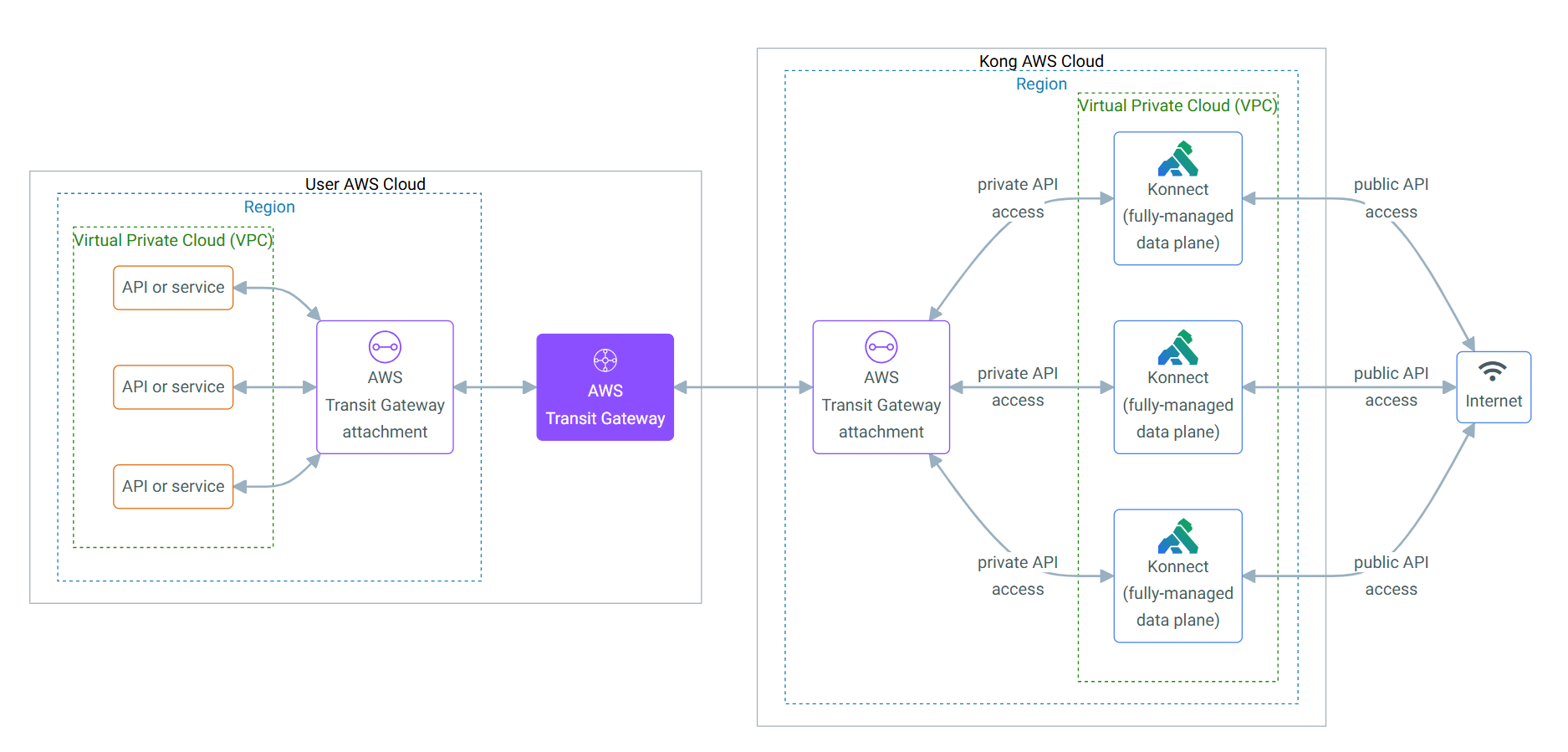We're continuing our efforts to make Kong Gateway Operator (KGO) the preferred way to install, upgrade, scale, and manage a Kong Gateway or Kubernetes Ingress — whether you’re managing from Kong Konnect or Kubernetes. With this latest release, we're:
- Making it easier for customers that have one team managing control plane provisioning and another managing gateway configuration and lifecyle, with mirror control planes
- Supporting AWS Transit Gateways to simplify cloud networking
- Improving support for multi-tenant Kubernetes clusters with different gateway scopes
- Supporting NodePort as an additional ingress service type to support developer deployments
As ever, we’re continuously addressing issues raised by the community. You’ll find the complete list of improvements in the KGO changelog .
Let’s dig into some of the more important changes to see how they can benefit your Kong Gateway deployment.
KGO with existing Konnect control planes
Previously, if you wanted to use KGO with Konnect, you had to define the Konnect control plane using KGO and configure it from there. If you have existing Konnect-managed Gateways with existing entities configured, this made it difficult to adopt KGO.
You can now reference existing Konnect control planes in your KGO setup using an existing KonnectID and setting KongGatewayControlPlane to type mirror. You can manage configuration directly in Konnect and also manage configuration with KGO, although entities are read-only in Kubernetes. Learn more about this new capability here.
If you aren’t already using KGO as your management tool of choice for Kong Gateway, maybe it’s time to take a look.
Support for Transit Gateways on hosted Konnect Dedicated Cloud Gateways (DCGW)
Dedicated Cloud Gateways (DCGW) are Kong Gateways that are fully managed by Kong in the cloud and region of your choice, connected into your cloud VPC network. Transit Gateways in AWS simplify cloud networking by centralizing routing through a central hub, reducing the need for multiple point-to-point peering connections.




